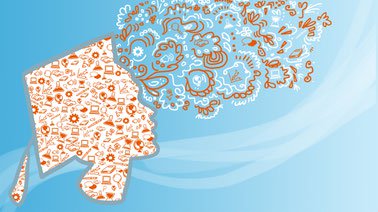✅📚💡 Authentic student voice inspiration, a high school redesign reading list, teen brain hacks, a PBL primer, and teacher impact research.
1.TRY: Authentic student voice inspiration
“Educators and policymakers spend a lot of time asking, ‘How can we better serve our students?’ But how often do we ask the real experts: the students themselves?” That’s some truth talk from Tony Monfiletto, executive director of Future Focused Education. We think you’ll be just as inspired as we are by the “If You Ask Me…” gallery— an interactive, augmented reality experience that brings student interviews to life. We hope you’ll listen to some of their stories and consider an initiative in your own schools.
2. DIVE IN: Redesign reading list

Getting Smart
Thinking about high school redesign? Getting Smart assembled a massive reading list to get you started. You’ll find dozens of links in 12 categories, such as formulating a strategy, planning a visit, considering a design focus, spurring district-wide redesign, shifting to competency, becoming an early college high school, and more.
3. EXPLORE: Teen brain hacks
A new infographic on the Science of Adolescent Learning from All4Ed shows educators how to leverage what scientists are learning about adolescent brain development to help students learn. During adolescence, young people are motivated by their peers. They’re more motivated to engage in activities or behaviors that reflect the shared values and interests of their friends and classmates. Adults can structure learning to include peer interaction and build upon students’ interests to boost their engagement.
4. ASK: A PBL Primer
What the heck is project-based learning? We love this question asked and answered by Heather Wolpert-Gawron for Edutopia. Her fun explanation of PBL takes on some pesky myths. In her words, “PBL cares about our mission to educate all. PBL never forgets that one of our main jobs is to prepare students for the predicted future. PBL keeps its eye on the ball no matter the trendy standard or curriculum package du jour. PBL doesn’t ask you to replace your content. It asks that you create a vehicle in which to communicate your content.” Sidenote: What are YOUR “what the heck is…” questions? Tell us with #GiveMe5XQ on social media.
5. READ: Good teacher “spillover”

Photo | Big Stock
“I think in general it means good teachers are even more valuable than we thought.” That’s what economist Isaac Opper had to say about the impact of good teachers. Check this out! His study in the American Economic Review found that good teachers can have an impact beyond their own classrooms, boosting outcomes for students that weren’t even in their classes. Further research is needed to determine how and why these effects are occurring.
X-tra from XQ
Ready to apply your insights from the 2018-19 school year to create a vision for the future of high school? “Envisioning the Graduate of the Future” is a free online course from MIT Teaching Systems Lab that begins May 2. The course from MITx offers educators the chance to embark on a design process to reflect on the purpose of high school. Participants can earn an edX certificate at no cost upon completion. This is a great end-of-year activity for you—or, better yet, for you and a circle of colleagues, or for you and your students. Learn more and Enroll now.
TAGS:







